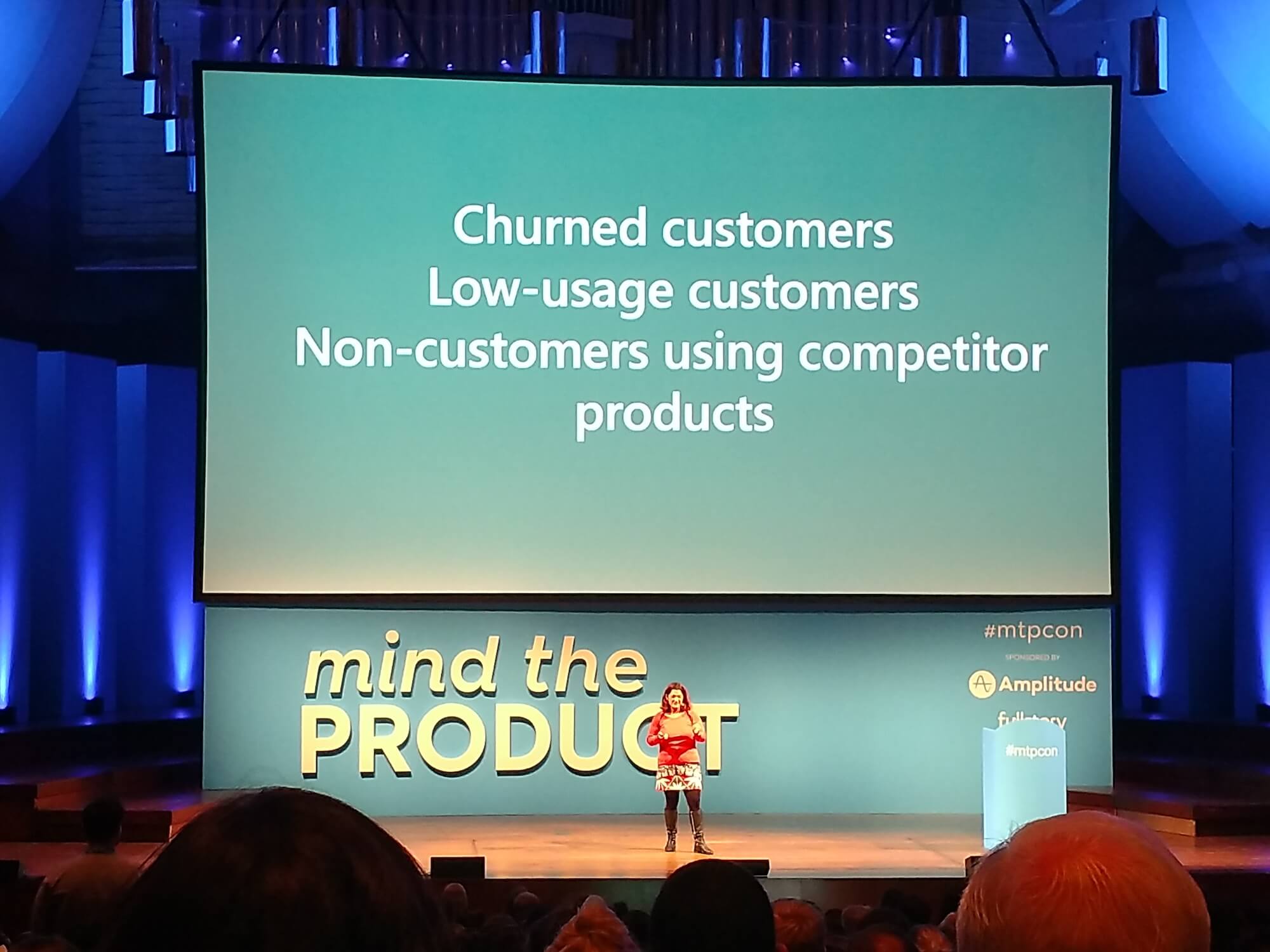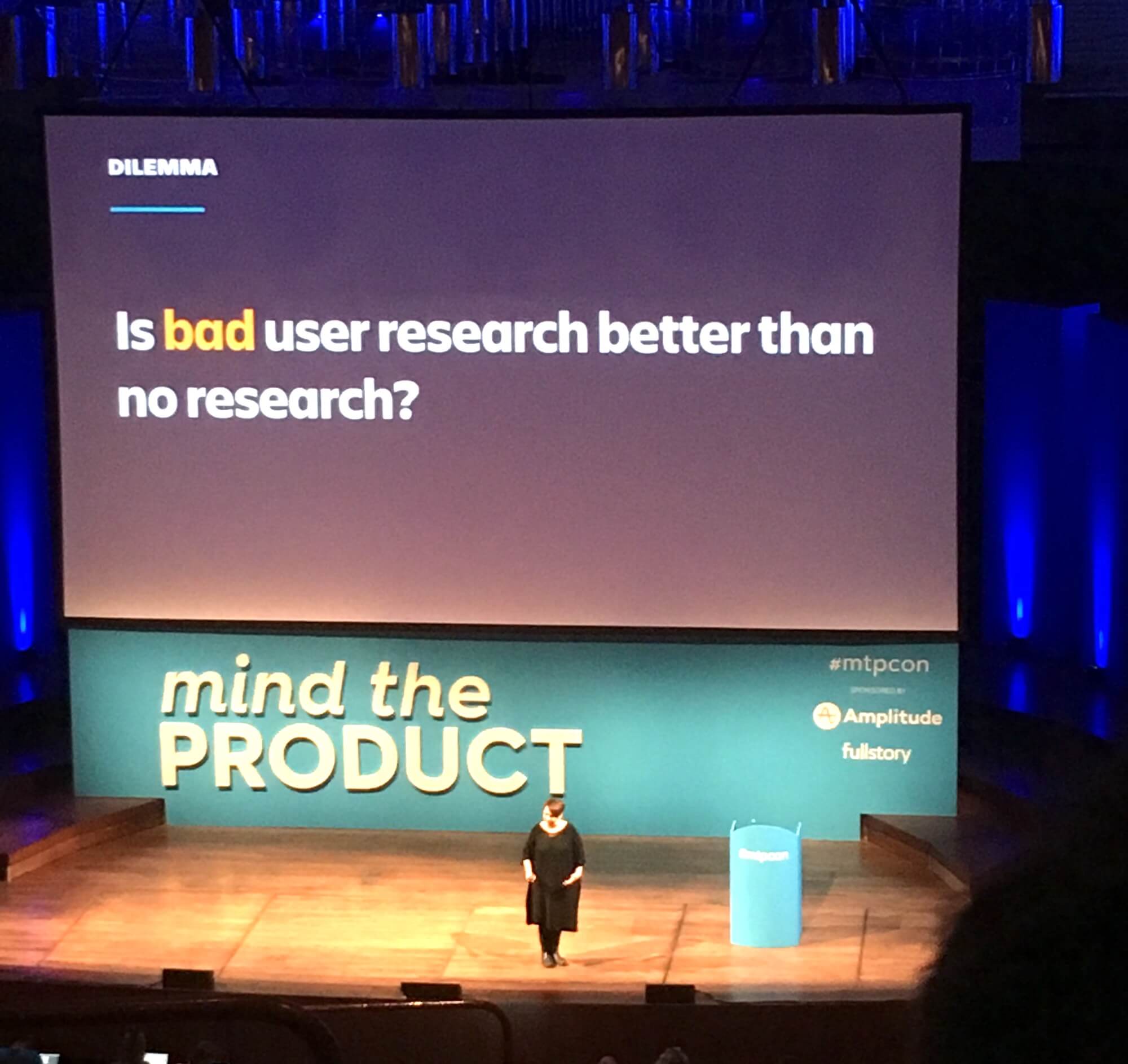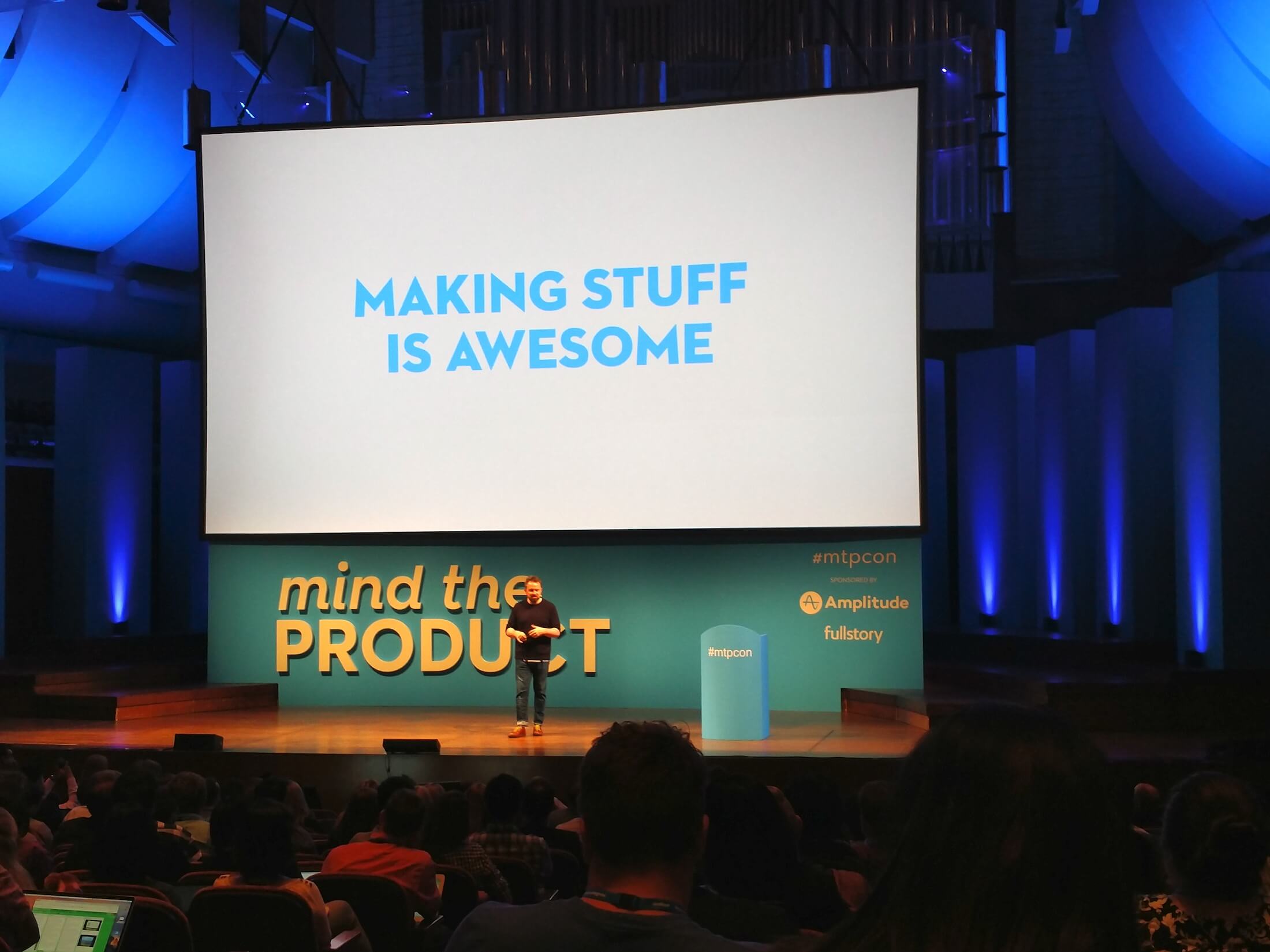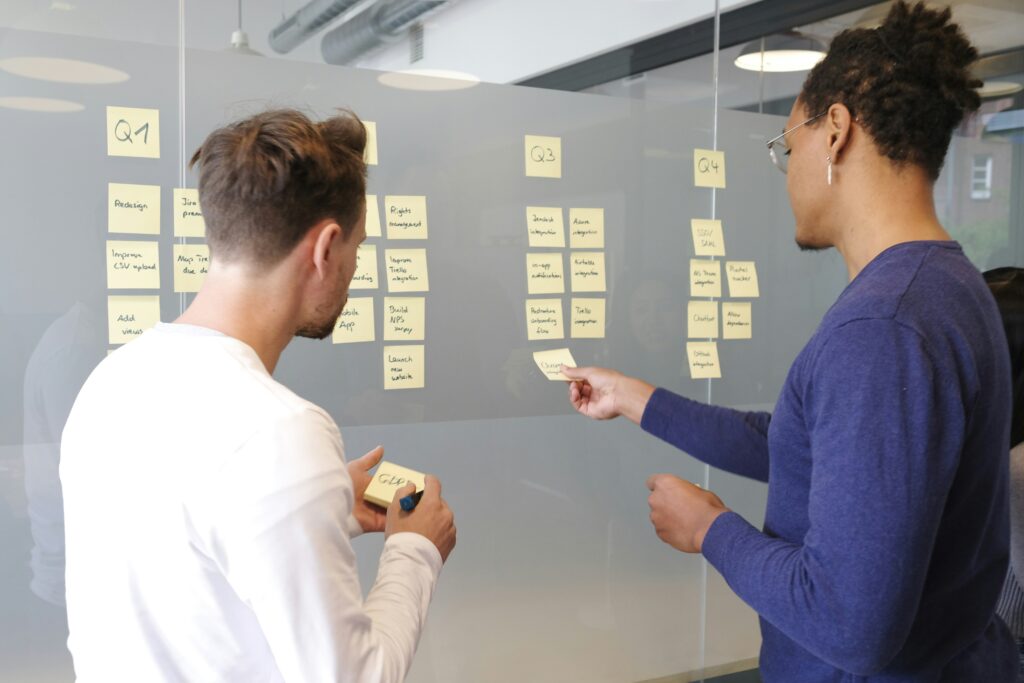Mind the Product has certainly established itself as a premier event for product people to connect, share, and learn from their peers. For 6 years now, the conference has drawn product people together from all corners of the globe. Last year, we were thrilled to attend, and published a recap blog post of what we learned (10 Takeaways from Mind the Product 2017). Unsurprisingly, this year did not disappoint, as we were once again reminded what we love about the product management community.
There were plenty of nuggets of wisdom shared throughout the day. Topics ranged from the product management career path, to improving customer interview questions, to product launch best practices. After digesting the rich diversity of insight shared, we thought we’d share our own list of four themes that really stood out at Mind the Product 2018.
1. Product Managers are generalists in a world of specialists.
Martin Erikkson kicked off the day with a brief but humbling perspective on our roles as product managers. He admitted that he often feels the effects of Imposter Syndrome. As product people, we’re surrounded by brilliant engineers, creative designers, and motivated marketers. Amidst the brilliance, it can be hard to feel like you belong.
That feeling, or awkwardness as Martin called it, is important, and product managers should embrace it. As he said, “In order to be innovative, we have to end our addiction to always being right”. You can’t solve everything, and often times you will be wrong, but with the support of a team (your specialists) you can turn those failures into opportunities.
Building on that notion, the next speaker, Christina Wodke, suggested that as a product manager, you have 3 jobs: You’re a business owner, a vision holder, and a team coordinator.

We all know there’s no set path to product management – we come from diverse backgrounds and experiences. For example, Christina was managing a restaurant before she became a product manager. This experience taught her valuable lessons that transferred over to product management. For example, she realized that any effective team must have:
- Mutual accountability
- A common purpose
- Performance goals
- Complementary skills
You’ll often depend on other departments (and more importantly, other people) to help you achieve your goals as a product manager. Teams should be collaborative and they should work to help each other. After all, we make products to make people’s lives better. People are at the heart of our products, and should be at the heart of how we work, too.
2. Data, data, and more data
Leisa Reichelt, Head of Research and Insights at Atlassian, started off her presentation with a simple question: Is bad research better than no research?

Product managers love data. After all, who doesn’t love a good graph? But as Leisa astutely reminded us, “Just because you can put information on a graph, that doesn’t make it science.” She said we should be more critical of what data we trust, and what we don’t. We rely on data to define our successes—and our failures. So shouldn’t we make sure it’s as useful as possible?
As an example, Leisa examined how to conduct better customer interviews. She pointed out that the answers you get depend on the questions you ask. When interviewing, she advised:
- Start with a wide context.
- Be user (not product or feature) centered.
- Invest in analysis. Treat this like research.
Preceding Leisa’s talk, we heard from Cindy Alvarez, an expert in customer research. Cindy offered great, tactical suggestions for how to reframe your interview questions to avoid confirmation bias. As she mentioned, “Any yes or no questions will have an obvious socially preferable answer.” Instead of simply asking “Do you want this specific feature?” rephrase your question to maximize its utility. For example, “Tell me about a feature that would improve your experience”.
But Cindy also pointed out that before you can ask the right questions, you have to ask the right people.
A sobering point she made is that “we look for evidence that proves us right, and we avoid or ignore evidence that contradicts our beliefs.” Cindy dubbed this the “Happy Customer Bias”. What we should be doing, she suggested, is talking to our churned customers, customers with low usage, and those who use our competitors’ products.
From this we are reminded that the context and source of your data is just as important as the data itself. Focus on a data set that tells the whole story. Fail to do so and you’ll never know where opportunities might exist.
3. We have a responsibility to our customers – and the world!
It’s a little telling that two different speakers independently chose to include the same quote in their presentations: “With great power, comes great responsibility.” Dan Olsen delivered an interesting perspective with this quote. He pointed out that while product managers might not feel like they hold great power, they certainly hold great responsibility.
Dan conceptualized the product development process by breaking it into two categories: the problem space, and the solution space. As he advised, “Don’t jump to solutions. Start in the problem space”. Doing this helps remind us that the products we build are meant to serve people’s needs. We should provide solutions to real problems—not create problems for which we reactively offer solutions.
Once we understand the problem, we can take steps to address it. Dan referenced the Kano Model as a useful framework for linking potential solutions to the problems they address:
Touching on the importance of ethics in developing products, Mariah Hay spoke about the potential ramifications of the products we build. Her philosophy is “First do no harm”. Mariah reminded us that we are serving people, and that “focusing on human-centered ethics will pay dividends”.
As she said, “Product managers are problem finders and solvers. But if we’re not careful, we’ll be problem creators.” She cited companies like Volkswagen and Cambridge Analytica. Clearly, the decisions we make in building products can have dire effects on our communities and our society.
4. Successful products do not require divine intervention
Not every company is going to be successful. In fact, most of them will fail. So what is the secret to building a product that prevails? A few speakers tackled this topic from different angles. One was Nir Eyal, who delivered an energetic and insightful talk questioning how we handle distractions.
Why are we distracted? Nir considered that we are trying to escape from discomfort, and he challenged us to acknowledge our own distractions. He even recommended time management products like Forest (a mobile app that encourages less smartphone usage) and SelfControl (a web app that helps you avoid distracting websites). To be “indistractable” is today’s ultimate superpower, he said.
Avoiding distractions helps create a better work space. And according to Tom Coates, the final speaker of the day, the best ideas we have require work. Innovation doesn’t strike from the divine. Rather, it comes from hard work and perseverance—sometimes over the span of many years. In his presentation, “How to find the product”, Tom recognized that everyone is capable of having good ideas if they’re willing to put in the work.

One thing that may help build better products, according to C. Todd Lombardo, is reconsidering how to utilize a roadmap. Todd was preaching to the choir for us ProductPlan folks in attendance. As he said, “A roadmap is not a list of features or a detailed release plan.” Roadmaps are strategic, and they may look different for everyone. His recipe for an effective roadmap has 5 parts:
- Product vision
- Business objectives
- Timeframes (long term, or short term)
- Themes
- A Disclaimer (a way to manage your audience’s expectations)
Sarah Tavel further added to the discussion on what makes a successful product. We know that eliminating distractions and building a clear roadmap is key. But Sarah also gave us a way to measure our success. As she explained,“What matters is not growth of users. It’s growth of users completing the core action.”
Her point was that the best products are the ones where, if they no longer existed, we would have the most to lose—products like Instagram and Pinterest that create a library of memories and interests. If these disappeared, we’d be devastated to lose all the energy we’ve put into them.
Successful products are the ones in which people find continued value. And no, it doesn’t require divine insight to build them—we just have to be willing to put in the work.
Final Words on Mind The Product 2018
Much like last year’s conference, Mind the Product 2018 focused a lot on the human elements of product management. The speakers satisfied our desire to learn with actionable advice and compelling data. But more importantly, they inspired us with their personal stories and experiences.
We may all build unique products for a variety of people, but at the end of the day, product people are people too. We can all learn something from the motto at Slack HQ: “Work hard and go home.” As product managers, it can be easy to forget to take some time for ourselves. And who knows, maybe your next big feature idea will come from focusing a bit more on your own life and the ways in which you personally interact with products!



